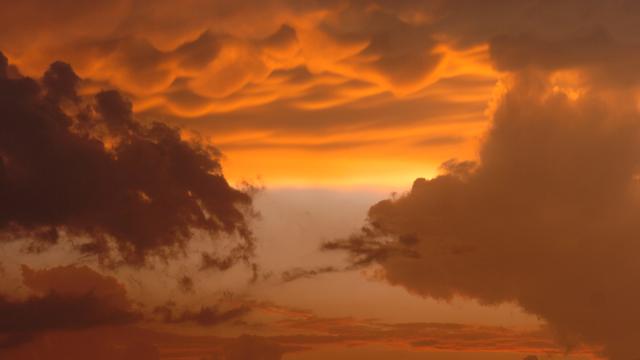There’s a whole slew of reasons to not rely on blocking the sun to cool the planet. But a new paper puts up perhaps the best one yet: It might not work if we continue to let carbon emissions skyrocket.
The findings, published on Monday in the Proceedings of the National Academy of Sciences, build on modelling done last year that showed we could face a heat death by cloud loss if world leaders let carbon pollution continue to increase. The same group of scientists used the same modelling approach to see what would happen as emissions rise but the world comes together to reflect sunlight back into space. The study comes with a few caveats, but it’s an important thought experiment as we try to understand the intricacies of the climate system and how our choices could impact it.
The process, known as solar radiation management, is something that’s increasingly being scrutinised by researchers as world leaders fail to come to grips with the climate crisis. It involves injecting tiny particles high in the atmosphere to send the sun’s energy back into space. Less incoming solar radiation would mean less energy trapped near the Earth’s surface, which would mean it’s less hot for all of us. But blocking the sun could come with a host of other issues from negative impacts on crop productivity to shifts in rainfall, to not being able to stop it.
The new paper looks at how blocking the sun even as emissions rise would impact stratocumulus clouds in the tropics. Those clouds have reflective tops as well as vents for outgoing energy. In other words, they act as a key cooling force. But previous research has shown they’re likely to thin and become less common as the planet warms, though how fast is an area of active research. The new research uses a model showing they thin and then dissipate suddenly at very high concentrations of carbon dioxide in the atmosphere. But the researchers introduced a new component to their model to see if solar radiation management could save the clouds, and by extension, the world.
The findings show that even with efforts to block out the sun, the clouds slowly thin and temperatures at the surface increase. But the real shock to the system comes when carbon dioxide levels reach an extreme of around 1,800 parts per million (ppm): At that point, the clouds vanish and rapid warming ensues, owing to an increasingly opaque atmosphere clogged with carbon dioxide and water vapour. The change is sharp, with temperatures going from increment warming of a few degrees to a sudden jump of 7 degrees Celsius.
If this sounds bad, well, it is. But allow me and Kate Marvel, a NASA and Columbia University scientist who studies clouds (and, full disclosure, is my colleague at Columbia), to walk you back from the ledge.
“Models let us do ‘experiments’ that would never, ever happen in the real world in order to try and learn things about complex systems,” she said in an email. “This is an example of that. It should in no way be taken as a realistic representation of what would actually happen under any real-world geoengineering scenario, and the authors are very explicit about that.”
Indeed, the research is a novel what-if to look at a vital but understudied part of the atmosphere. Clouds are everywhere and come in many different flavours, yet climate scientists are still working to unravel their impacts on the climate and in turn, our impact on them. While tropical stratocumulus clouds have a cooling influence, for instance, cirrus clouds can heat up the planet. We have a lot to learn on that front, and understanding clouds along with how geoengineering may interact with them is something we very much should be researching.
There’s also the fact that the carbon dioxide concentrations the clouds disappear at is extreme (or as Marvel put it, “BANANAS”). We are currently living in a 410-ppm world, and it took us roughly 170 years to get here from pre-industrial levels of around 280 ppm. Yes, the slope of the curve has been increasing. But the problem of climate change has also become more urgent, and while it’s certainly possible the world just goes to town and burns through the remaining dead dinosaurs still underground, such a path appears less probable. Even if we decide to go for it, the worries about whether our sunlight-reflecting strategy is working will almost certainly be the least of our concerns.
“This paper is not saying ‘geoengineering will get rid of the clouds, everyone panic,’” Marvel worte. “It’s saying, ‘hey, here’s yet another aspect of the earth system that is complicated; let’s put a lot more effort into studying this before we do something rash.’”
Which, yes. Also, let’s consider drawing down emissions rapidly before we get to testing these models in real life.
